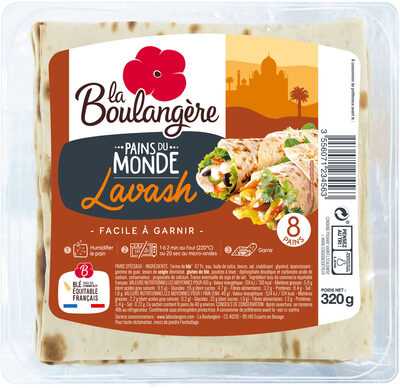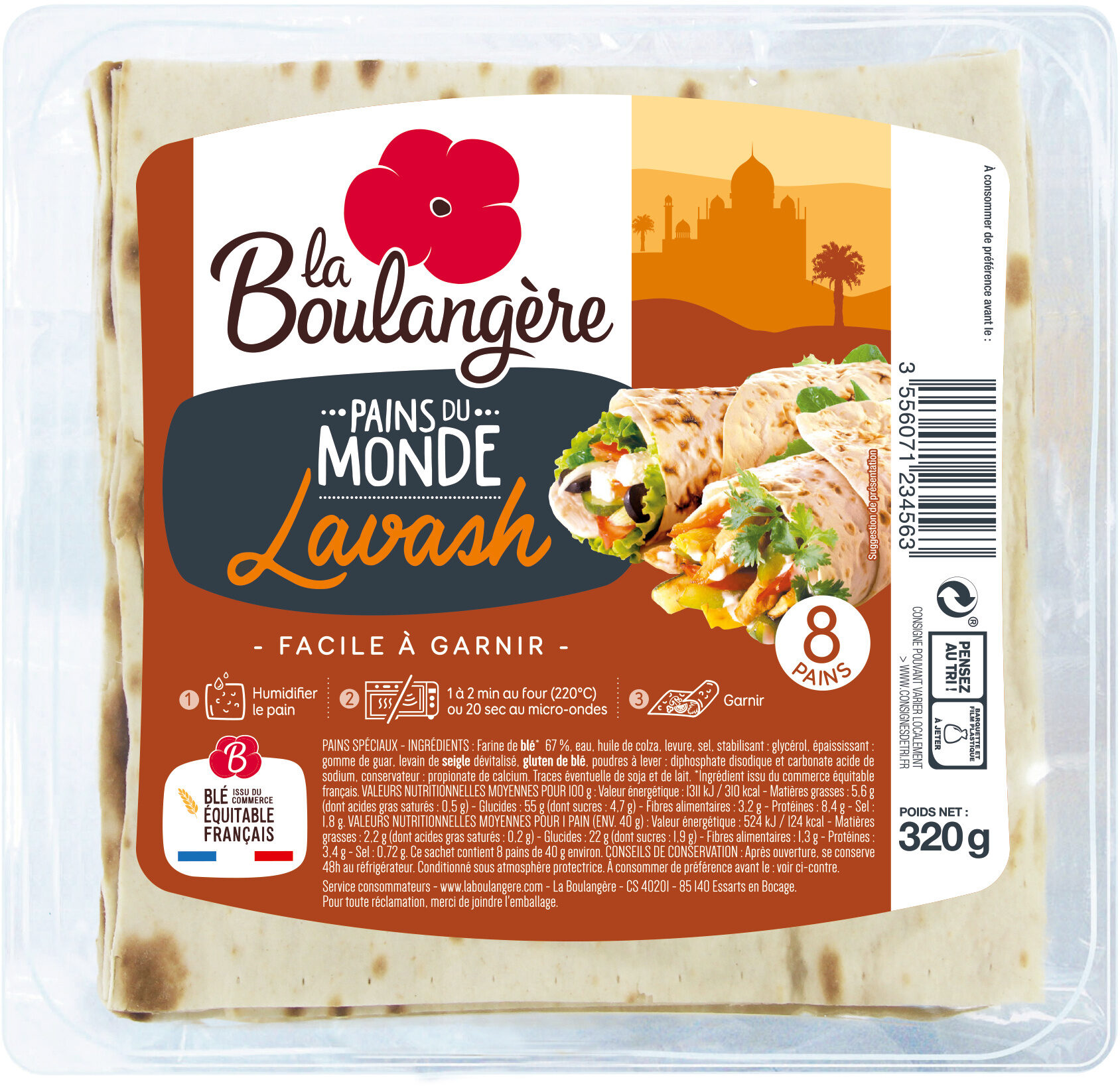Pains du monde Lavash - La Boulangère - 320 g
Nota important: aquest producte ja no es ven. Les dades es conserven només com a referència. Aquest producte no apareix a les cerques habituals i no es té en compte per a les estadístiques. (Data de retirada: 2023/09/01)
Aquesta pàgina del producte no està completa. Podeu ajudar a completar-la editant-la i afegint-hi més dades a partir de les fotos ja disponibles, o fent-ne més amb l'aplicació de androide o iPhone / iPad. Gràcies!
×
Algunes de les dades d’aquest producte les ha proporcionat directament el fabricant LA BOULANGERE & Co.
Codi de barres: 3556071234563 (EAN / EAN-13)
Quantitat: 320 g
Empaquetament: Plàstic, en:Bag
Marques: La Boulangère
Categories: Aliments i begudes amb base vegetal, Aliments amb base vegetal, Cereals i patates, Pans, Pans especials
Etiquetes, certificacions, premis:
Comerç Just, Punt verd, Fet a França, Comptador Nutricional, Grau B Nutriscore, Agri-Éthique France
Botigues: carrefour.fr
Matching with your preferences
Entorn
Empaquetament
Transport
Report a problem
Fonts de dades
Producte afegit per openfoodfacts-contributors
Última modificació de la pàgina del producte per org-la-boulangere-co.
La pàgina del producte, també editada per aleene, alexfauquette, beniben, chevalstar, driveoff, kiliweb, openchris, org-la-boulangere, packbot, quechoisir, randomname333, tacite, teolemon, thaialagata, yuka.E-4ZGdiMGN4PRfT5joAV9j-LSOO5CP9-HH89og, yuka.SDR4ZExLNE9vZVFreTgxdnhDanl4ZXNzbUtDVVUycWVjTklmSVE9PQ, yuka.V1A1Yk5hSUdvZXNrd3ZNVm9SSDAwTlZGbTV2d1ZtT1FMK3NoSVE9PQ, yuka.V1poWlQ3MFJpS05ibDhjNjd5dkwwY3A1bWJtNWRsT3VCYk1qSVE9PQ.











